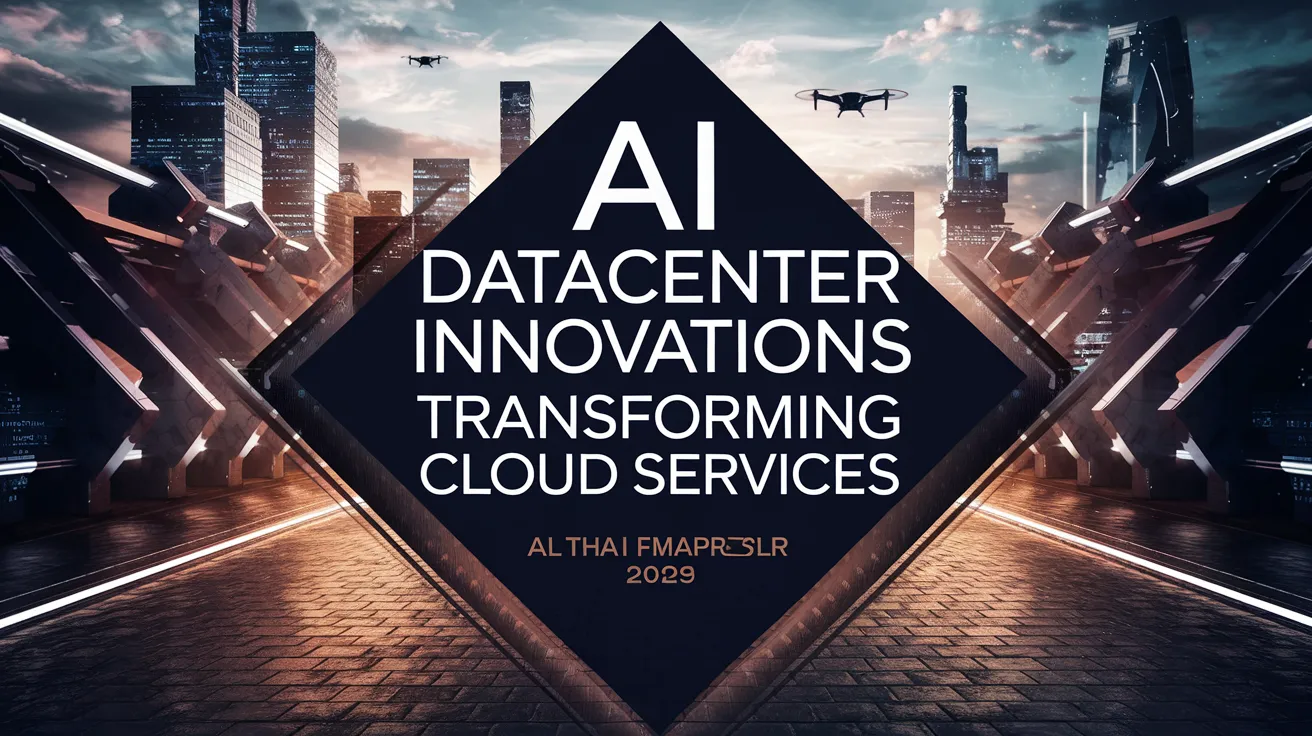AI Datacenter Innovations Transforming Cloud Services

This week marked a significant milestone for the global adoption of artificial intelligence with Microsoft’s introduction of the Fairwater AI datacenter in Wisconsin. This facility, representing the largest and most sophisticated AI factory built to date, is part of a broader initiative that includes the establishment of multiple additional datacenters across the United States, along with plans for a new hyperscale datacenter in Narvik, Norway, and a partnership in Loughton, UK, aiming to create the country’s largest supercomputer.
These datacenters are substantial investments, amounting to tens of billions of dollars and housing hundreds of thousands of cutting-edge AI chips. Their architecture is designed to seamlessly integrate within Microsoft’s extensive cloud network, which consist of over 400 datacenters across 70 regions. This interconnectedness aims to enhance both efficiency and accessibility to AI services globally.
Understanding AI Datacenters
So what exactly constitutes an AI datacenter? These facilities are specifically tailored to support the training and operation of large-scale AI models and applications. Microsoft’s new Fairwater datacenter spans 315 acres and is equipped with three massive buildings totalling 1.2 million square feet. It is designed to function as a single, colossal AI supercomputer, far exceeding the performance capabilities of conventional cloud datacenters.
Typical cloud datacenters are optimized for smaller, individual workloads like hosting websites or emails, while Fairwater is configured to interconnect hundreds of thousands of NVIDIA GPUs, thus exponentially enhancing its computational capacity.
The Role and Functionality of AI Datacenters
AI models require extensive computational resources to operate effectively, relying on thousands of interconnected GPUs to perform concurrent computations. These systems are designed to handle massive data loads, processing information — such as text, images, or videos — broken down into manageable tokens. Efficient data processing and uninterrupted communication between servers are crucial for optimal performance.
Infrastructure Excellence for AI Requirements
At the core of the AI datacenter lies a sophisticated infrastructure tailored to handle the extensive computational demands of modern AI applications. Utilizing NVIDIA GB200 servers and utilizing high-speed networking technologies, Microsoft has advanced its datacenter capabilities beyond typical expectations. Every rack in the facility is interconnected to function as a cohesive entity capable of processing incredible volumes of tokens concurrently.
This architectural framework not only optimizes physical space but also addresses challenges regarding communication latency, particularly with the introduction of advanced networking technologies to enhance efficiency across multiple servers.
Environmental Considerations in AI Infrastructure
Microsoft’s commitment to sustainability is evident in Fairwater’s cooling infrastructure, which leverages advanced liquid cooling systems to manage the heat produced by high-density AI hardware. This innovative approach reduces water waste considerably, demonstrating a proactive stride towards environmental consciousness, especially in comparison to traditional air cooling systems.
Storage Enhancements for AI Workloads
The storage systems supporting the Wisconsin data facility are strikingly large, with capabilities extending to exabytes of data and millions of compute cores. Azure’s next-generation storage solutions are designed to accommodate the blistering pace required for AI workloads, ensuring that there is no downtime in data availability and significantly enhancing processing speeds.
AI WAN: A Global Network for AI Supercomputing
These datacenters also symbolize a paradigm shift in the architecture of AI supercomputers by forming a global network interconnected via Azure’s Wide Area Network. This setup promotes a distributed, resilient computing environment, allowing for enhanced flexibility and capability to tackle increasingly ambitious AI challenges.
Advancements in AI Cloud Infrastructure
Ultimately, Microsoft has reimagined its entire cloud infrastructure to align with the evolving needs of AI technologies, establishing a new era of intelligent cloud services. As the Fairwater datacenter begins operations, it signifies not just technological advancement, but an intentional commitment to facilitating the proliferation of AI capabilities for a diverse range of applications and industries.
For more insights into Microsoft’s innovative datacenter designs, interested readers can explore the virtual datacenter tour offered at datacenters.microsoft.com.
Scott Guthrie, as Executive Vice President of Cloud + AI, is pivotal in steering these advancements and helping organizations worldwide harness the power of AI technologies for their transformative needs.